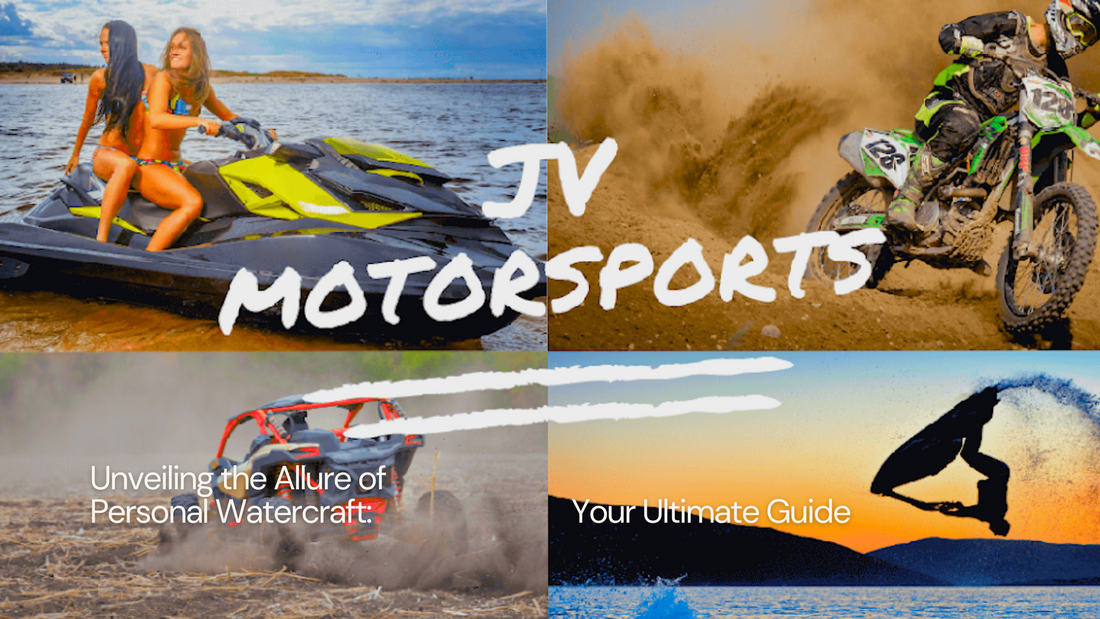
Unveiling the Allure of Personal Watercraft: Your Ultimate Guide
Share
Embark on an aquatic adventure like never before with personal watercraft. These sleek vessels offer thrill-seekers the opportunity to glide across the water's surface with unmatched speed and agility. In this guide, we'll delve into the world of personal watercraft, covering everything from their history and development to essential safety tips and maintenance guidelines.
| Outline | Details |
|---|---|
| 1. Introduction | Explore the allure of personal watercraft. |
| 2. History of Personal Watercraft | Tracing the evolution of personal watercraft. |
| 3. Types of Personal Watercraft | Discover the various types available in the market. |
| 4. Benefits of Personal Watercraft | Unveiling the advantages of owning a personal watercraft. |
| 5. Safety Tips | Essential guidelines for a safe and enjoyable ride. |
| 6. Choosing the Right Personal Watercraft | Factors to consider when selecting your perfect ride. |
| 7. Maintenance Tips | Keeping your personal watercraft in top condition. |
| 8. Popular Personal Watercraft Models | Highlighting some of the most sought-after models. |
| 9. Personal Watercraft Accessories | Enhance your experience with the right gear. |
| 10. Riding Techniques | Mastering the art of maneuvering your personal watercraft. |
| 11. Environmental Impact | Understanding the ecological implications. |
| 12. Regulations and Licensing | Navigating the legal requirements for personal watercraft. |
| 13. Conclusion | Summarizing the key points and inviting readers to dive in. |
History of Personal Watercraft
The concept of personal watercraft dates back to the 1960s when Clayton Jacobson II invented the first commercial jet ski, known as the Kawasaki Jet Ski. Since then, personal watercraft have evolved significantly, with manufacturers introducing innovative designs and technologies to enhance performance and safety.
Types of Personal Watercraft
Personal watercraft come in various forms, including stand-up models designed for agility and maneuverability, as well as sit-down models offering comfort and stability. Additionally, there are specialized models for racing, touring, and recreational purposes, catering to a diverse range of preferences and skill levels.
Benefits of Personal Watercraft
Owning a personal watercraft offers numerous benefits, including adrenaline-pumping thrills, access to remote waterways, and opportunities for bonding with family and friends. Moreover, personal watercraft are relatively compact and easy to transport, making them ideal for spontaneous outings and weekend getaways.
Safety Tips
Before embarking on your personal watercraft adventure, it's crucial to prioritize safety. Always wear a life jacket, familiarize yourself with local water regulations, and avoid reckless maneuvers. Additionally, maintain a safe distance from other vessels and be mindful of weather conditions to ensure a smooth and secure ride.
Choosing the Right Personal Watercraft
When selecting a personal watercraft, consider factors such as your skill level, intended usage, and budget. Whether you prefer the agility of a stand-up model or the comfort of a sit-down craft, there's a personal watercraft suited to your needs and preferences.
Maintenance Tips
To prolong the lifespan of your personal watercraft, regular maintenance is essential. This includes flushing the engine after each use, inspecting and lubricating moving parts, and storing the vessel properly when not in use. Additionally, schedule routine service checks to address any potential issues promptly.
Popular Personal Watercraft Models
Some of the most popular personal watercraft models on the market include the Yamaha WaveRunner, Sea-Doo Spark, and Kawasaki Jet Ski. These renowned brands offer a wide range of features and options to suit various preferences and budgets.
Personal Watercraft Accessories
Enhance your personal watercraft experience with a range of accessories, including waterproof storage compartments, navigation systems, and safety gear such as whistles and signal flags. Additionally, consider investing in a sturdy trailer for convenient transportation to and from the water.
Riding Techniques
Mastering the art of riding a personal watercraft requires practice and patience. Start by familiarizing yourself with the controls and practicing basic maneuvers in open water. As you gain confidence, experiment with more advanced techniques such as sharp turns and jumps, always prioritizing safety and control.
Environmental Impact
While personal watercraft offer endless excitement, it's essential to be mindful of their environmental impact. Avoid disturbing wildlife habitats, adhere to designated watercraft zones, and dispose of waste responsibly. By practicing eco-conscious behavior, you can minimize your ecological footprint and preserve natural ecosystems for future generations.
Regulations and Licensing
Before hitting the water, familiarize yourself with local regulations governing personal watercraft operation. In many regions, operators are required to obtain a boating license and adhere to specific safety guidelines. By staying informed and compliant, you can enjoy your personal watercraft responsibly while minimizing risks to yourself and others.
Personal Watercraft
In conclusion, personal watercraft offer an exhilarating blend of speed, agility, and freedom on the water. Whether you're a seasoned enthusiast or a curious beginner, there's never been a better time to explore the world of personal watercraft. By following safety guidelines, choosing the right model, and embracing eco-conscious practices, you can embark on unforgettable aquatic adventures with confidence and enthusiasm.
FAQs (Frequently Asked Questions)
How fast can a personal watercraft go? Personal watercraft can reach speeds of up to 60 miles per hour or more, depending on the model and conditions.
What safety equipment is essential for personal watercraft riders? Essential safety equipment for personal watercraft riders includes a Coast Guard-approved life jacket, a whistle or horn for signaling, and a lanyard or kill switch to shut off the engine in emergencies.
Do I need insurance for my personal watercraft? While insurance requirements vary by location, it's highly recommended to invest in comprehensive coverage to protect yourself and your vessel against accidents, theft, and liability claims.
Can I ride a personal watercraft at night? Operating a personal watercraft at night is generally discouraged due to reduced visibility and increased safety risks. However, if necessary, ensure your vessel is equipped with proper navigation lights and adhere to all relevant regulations.
How often should I service my personal watercraft? Regular service intervals for personal watercraft typically range from 50 to 100 hours of operation, depending on the manufacturer's recommendations and usage conditions.
Are personal watercraft environmentally friendly? While personal watercraft can have some environmental impact, particularly in sensitive
